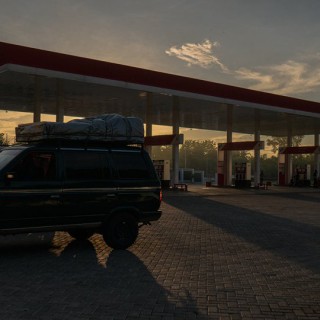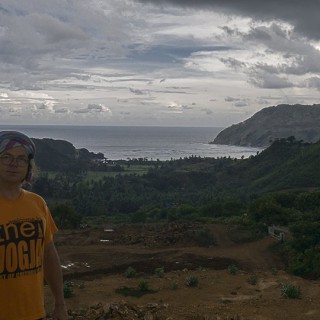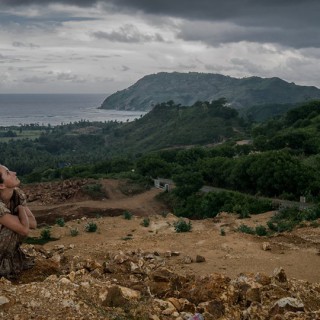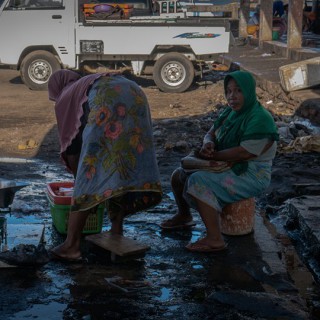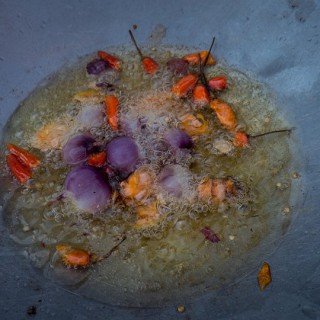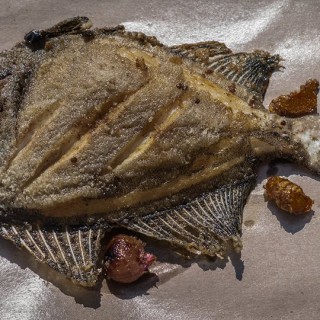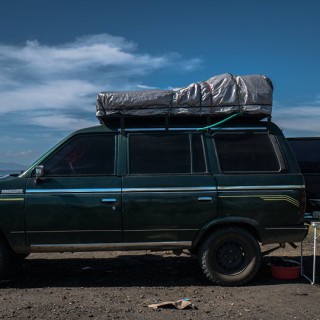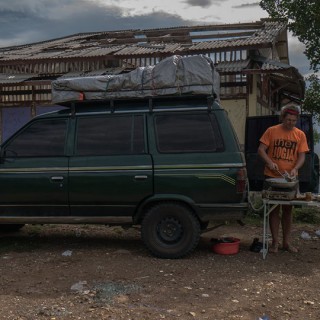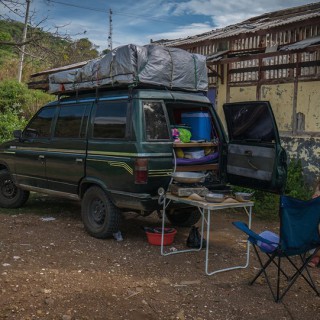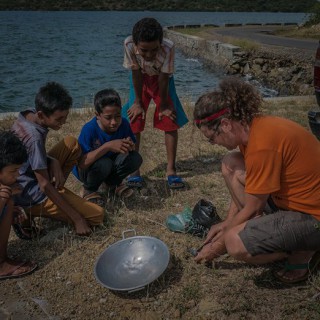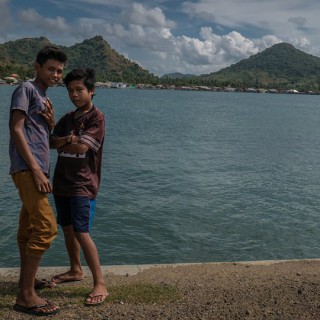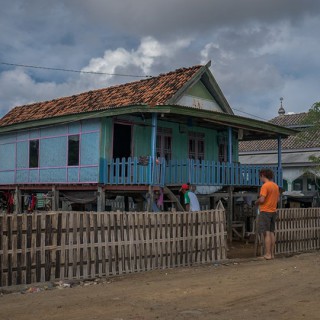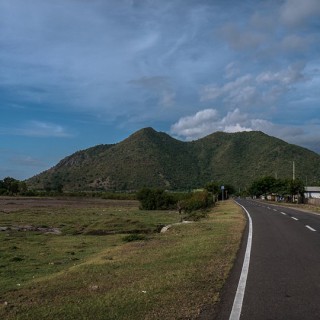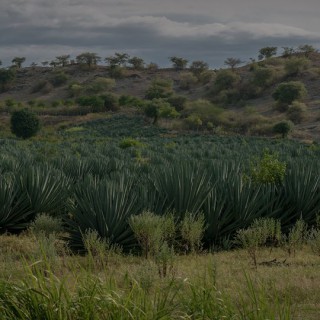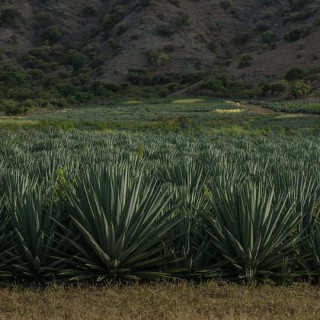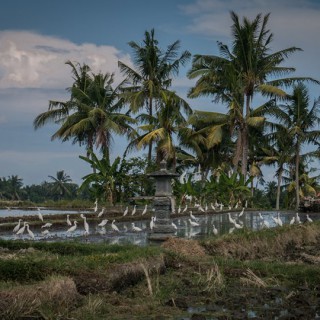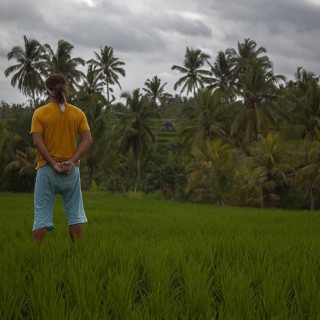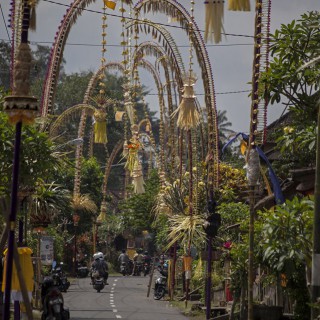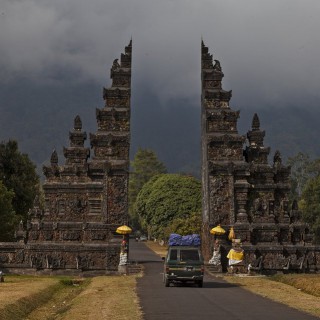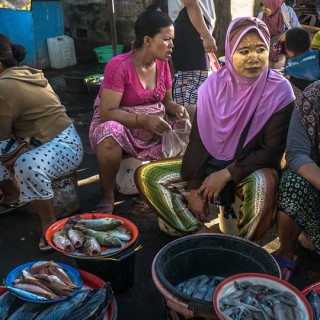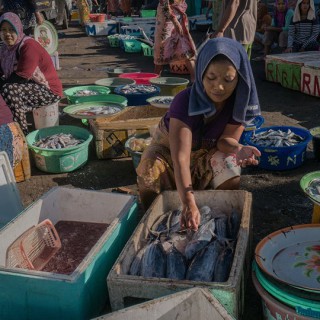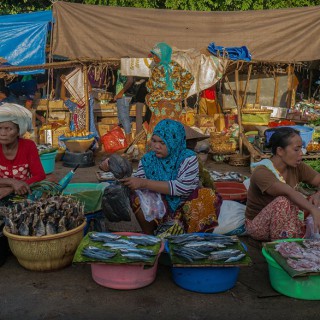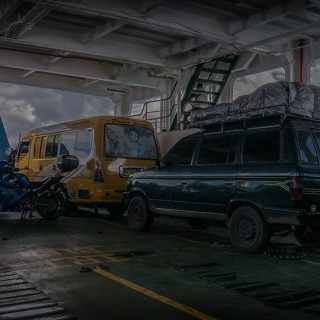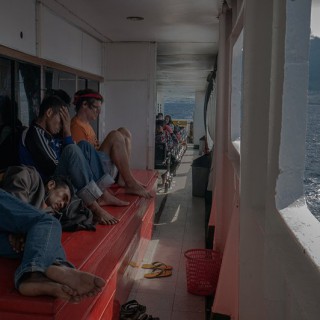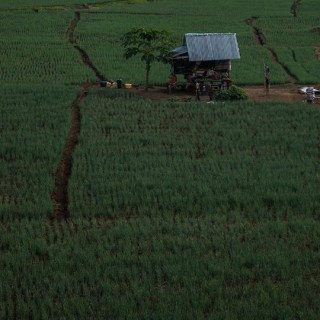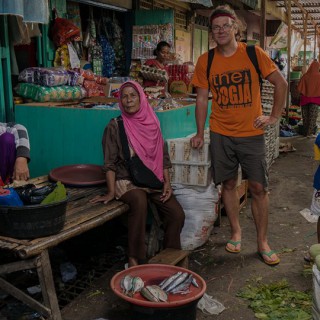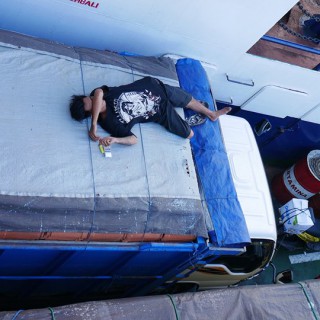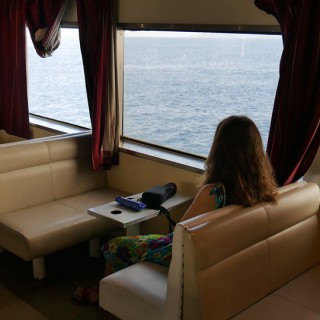1990s. Back to the past.
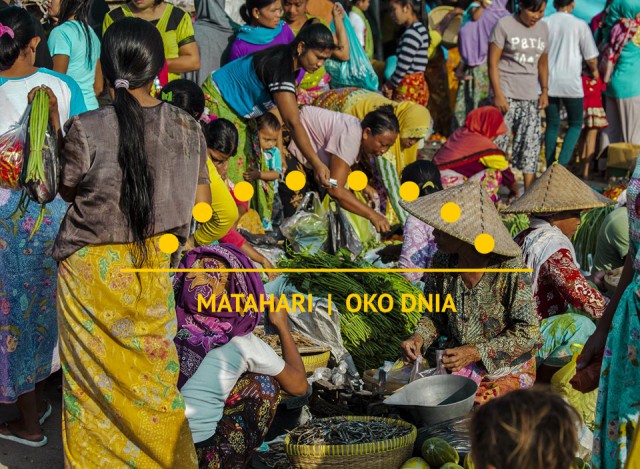
A Pertamina petrol station, Sumbawa Island, 100 km outside the city of Bima.
It is raining. Since the beginning of our stay here, we have had the feeling that there is too much rain. Yesterday, we witnessed a spectacle created by flashes of lightning from several big clouds, without any rain or thunders though. Today, on the other hand, it is both raining and thundering, and we are listening to the sound of rain drops drumming on the roof of our car.
It is difficult to write anything. When we decide to mae a stop, our eyelids are drooping and we really want to sleep. We are drinking some moringa and sirsaka for stimulation and to catch the next breath.
Leaving Lomboku, we stopped off at Tanjung Luar, a big and colorful fish market, where you can see sharks, mantas and hundreds of other treasures straight from the sea.
We particularly enjoy markets as they are special places where a peculiar show can be observed. You either buy or sell. No unnecessary questions are asked, and even we – white people, or Bulle, as they call us here – are subject to this rule. Besides, you can buy things unobtainable in Poland.
This time we purchased squids, prawns as well as black fish, slightly tinged with blue color.
Once, when we were on Caluya Island, in the Philippines, we filmed a man who was cutting the flesh of a living fish with a huge knife and then threw it into the fire. He told us that they tasted better when dying in flames.
At Tanjung Luar we also saw fish from the Philippines.
Immediately afterwards, we were frying these delicacies with some turmeric, garlic, chili and tapioca. Undoubtedly, fish from the Philippines are one of the best!
Considering the fact that the local people visited us only once during our meal – to ask us some standard questions about children, where we were from and whether we were married or not – we could call this dinner a success. Local people give us a hard time. Whenever we stop, two minutes later there is someone right next to us with the same set of questions.
We are even planning to make some small boards with answers and give these to them to rush things through. It is usually different on Bali. The locals there never ask about children, and conversations are sometimes inspiring. It happened to us when we visited Marco Cassani, an artist from Italy, who took us to the place where we were drinking and eating, but, first and foremost, we were talking.
Probably not everyone knows that Bali was powered by electricity in 1994. Before that, people lived according to the rhythm of the sun.
The sunset filled them with fear that they turned into art.
Everything on the ground would go black, while the sky was burning red. The admiration for the last breath of the day as well as for the everyday death of the sun created a Bali landscape which later enraptured the rest of the world.
Even though little was left of those unique paintings, it is still possible to hear whispers of inspiration in mellow groves of Bali.
It was around noon when we got on the ferry to Sumbawa. Two hours later we were, yet again, on the road heading east.
Rain covered the island with greenery. It was not Sumbawa that we knew. This time it looked more like Flores Island, up in the mountains.
On the western tip of the island, there is a picturesque aloe plantation immortalized by van Gogh in one of his paintings. Unfortunately, we failed to convince a goatherder to sell at least part of it.
Later, when we hit the road again, we drove to a huge traffic circle. Having difficulties leaving it, we found ourselves as if put into orbit that trapped us to finally launch us into a different reality.
Few hours later we reached the village of Bugis, inhabited by the people from the coast. It is a large and incredibly interesting ethnic group, where mosques are rather small and women do not cover their faces.
People living here are a bit taller than the rest of Indonesians and they have eyes like Native Americans. They are cheerful and friendly, which made us really happy, especially after the time we spent on that traffic circle. The architecture of Bugis is amazing and it shows the richness of tradition not killed by God’s ideology.
Well-proportioned buildings not only are decorated but also raised on stilts, which is a lot in comparison with houses built by other natives, who simply nail down some wooden planks together and live on earthen floors along with their animals.
The Bugis people have their pride and they show it in a positive way.
We all should learn from them how to value life.
Interestingly, they avoid eating chili, as it is too hot for them and generally not tasty.
On the other hand, it is worth knowing that the Bugis people on Sulawesi consume huge amounts of chili.
Sumbawa is heavily polluted. People just drop litter on the streets and no one cleans it up. Saying that this is wrong only makes them laugh or sneer. “Clean it up in Europe if you want to and let us do things our way. We enjoy our freedom. We burn woods because we can make money out of it. We drop litter because we don’t feel like cleaning it up. We’re free and joyful.”
In the evening, we got to the second Bugis village. It was nice and joyful.
We bought a piece of delicious fish and 5 kilograms of ice for our refrigerator.
Yesterday, squids and prawns went bad. The smell was unbearable. Here, a moment of inattention is enough for the food to spoil.
This poses a huge problem for us. The fridge that we bought in Poland turned out to be totally worthless. It is electric and fails to cool food.
We experienced quite a stir with the ferry to Sumba. We called our friends and asked them to check the schedule. Everything was ready for the evening, but when we got to the harbor, there was no ferry. It was supposed to be the next day.
We spent the night at yet another Pertamina, waiting.
It was extremely hot. A wet sauna. It stopped raining. It is the beginning of the Matahari climate.
It took a lot of kilometers to get from Yogyakarta to Sape, where we are staying right now. This is the road that leads to islands in the east.
We have a piece of advice for those interested in coming to Indonesia.
If you want to go back in time to eastern Poland of 1990s, with no infrastructure, it is time to hit the road and come here.
However, if you are fascinated with straight lines of modernism, you will not find happiness here, but rather hell.


